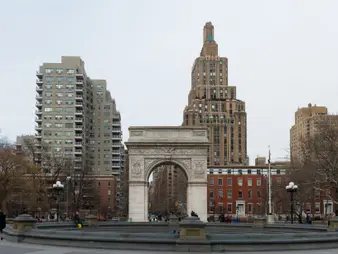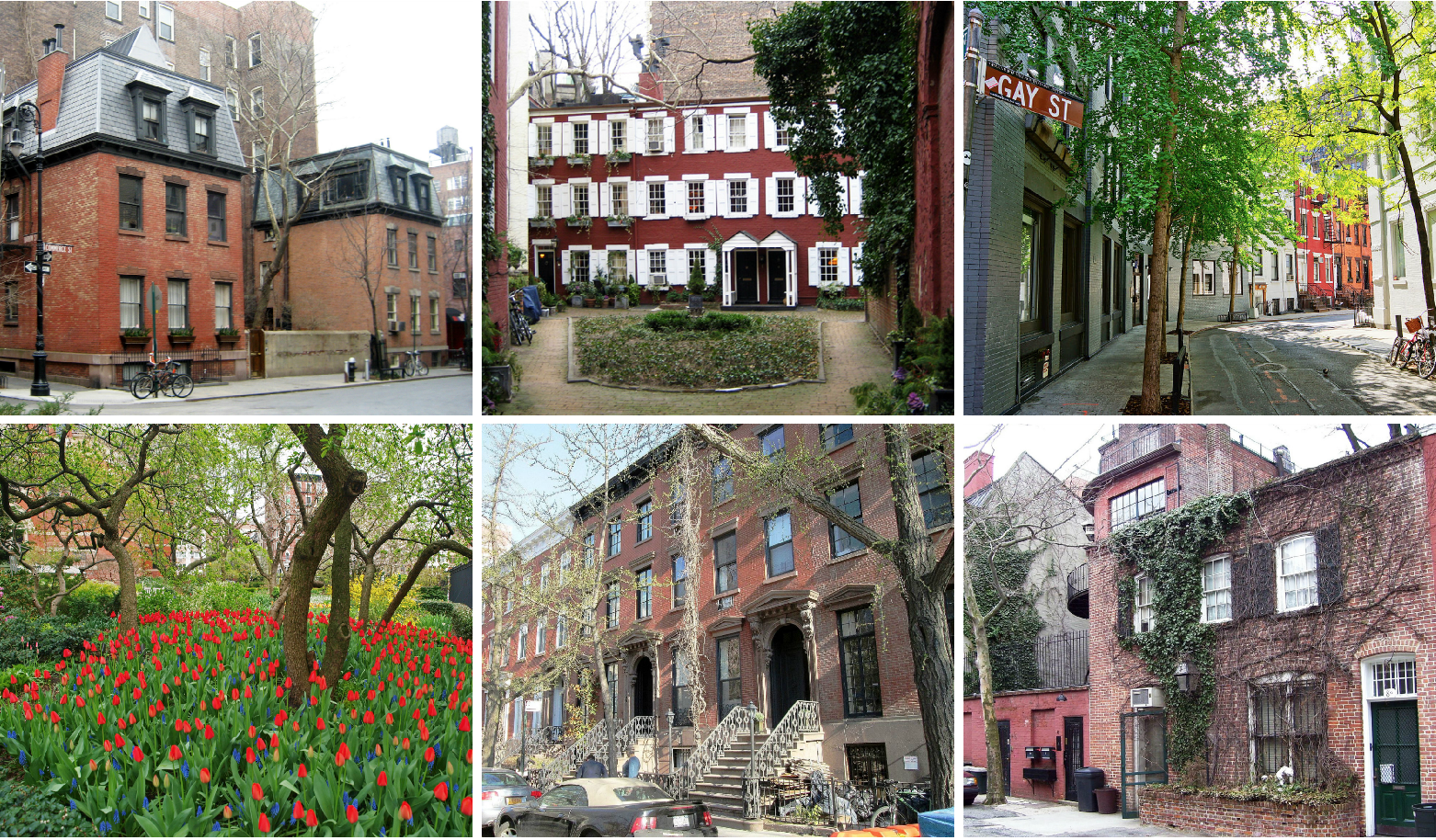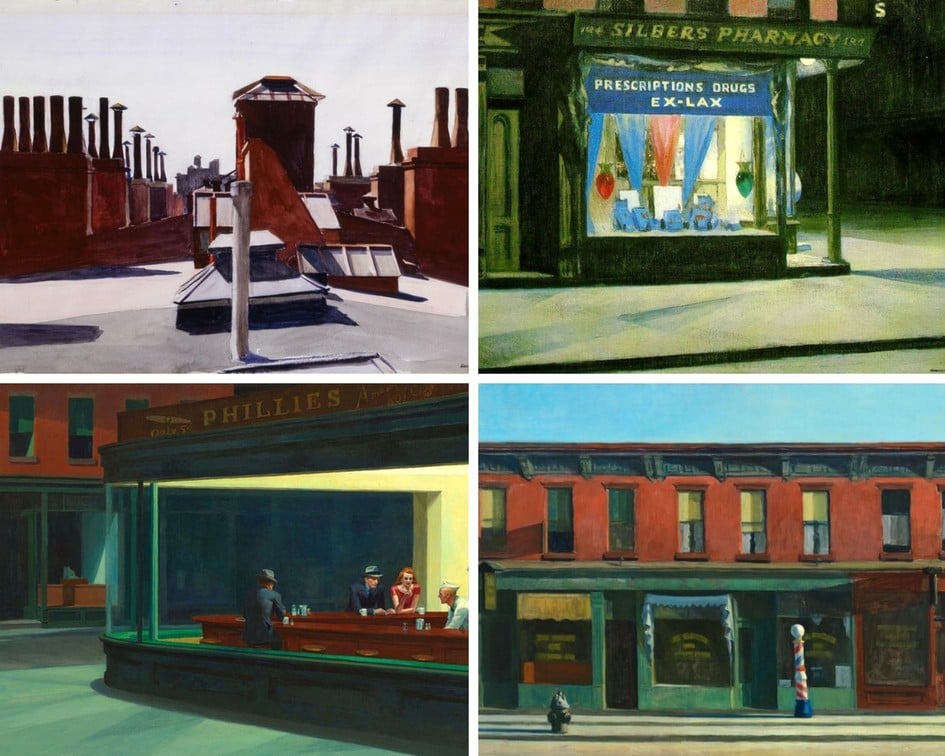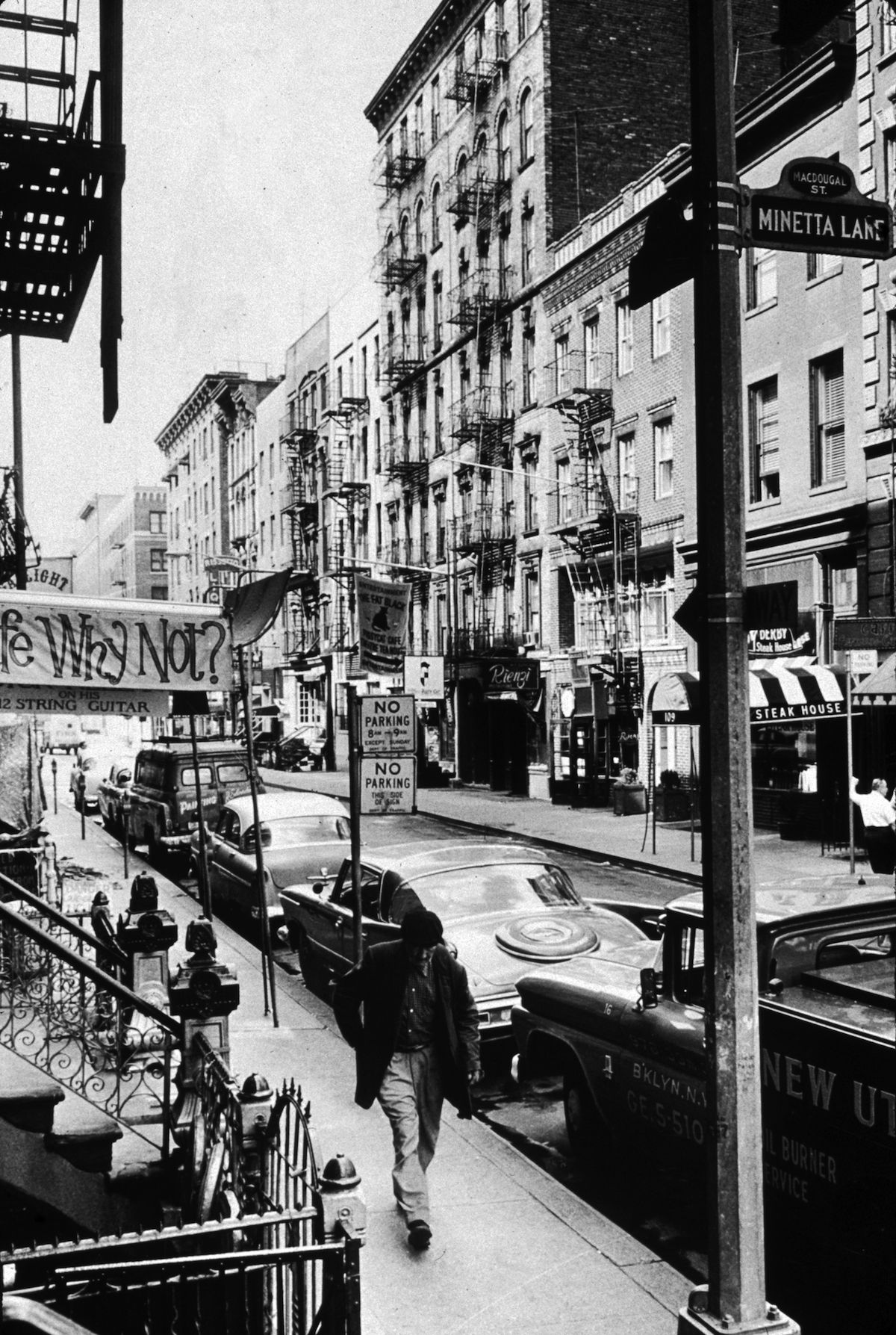In 1956 thirteen years shy of the designation of the Greenwich Village Historic District which would have preserved it the Tenth Street Studio Building. The narrator of The Last Leaf offers several reasons why artists chose to live in Greenwich Village.
:format(jpeg)/cdn.vox-cdn.com/uploads/chorus_image/image/53194319/GVSHP_8_Wha.0.jpg)
Vintage Photos Of Bob Dylan And Greenwich Village In The 60s Now Browsable Curbed Ny
So to quaint old Greenwich Village the art people soon came prowling hunting for north windows and eighteenth-century gables and.

. Studios in Greenwich Village now often rent for at least 2000 and up per month meaning an artist would need an annual salary of 80000 to afford this rent. A second reason was that the neighborhood was very charming to the artistic eye. Many artists such as Edward Hopper and Salvador Dali drew inspiration from the Village and lived worked and incorporated its beauty energy and unique culture into their work.
He could not possibly know about the first artist who discovered Greenwich Village and started a trend. As Henry suggests in. Many young professionals live in Greenwich Village and residents tend to be liberal.
This is the story of Greenwich Village as a character an eccentric character maybe but one that changed American life and how the folky activist spirit it fostered in arts culture and the protest movement came back in. Today rising rent has made it nearly impossible for young artists. In the 1950s people often defined Greenwich Village as a literal village with a small-town atmosphere.
The author is painting a fanciful word-picture based on. New York University and its art galleries have played key roles in this illustrious history. New York Citys Greenwich Villagebordered roughly by Fourteenth Street on the north by the Hudson River on the west by Broadway on the east and by Houston Street on the southhas long been a fertile spawning ground for the arts.
Henry gives a couple of reasons why artists moved to Greenwich Village. The NY Tribune published an article titled THIS TOWN IS NO FIT PLACE FOR AN ARTIST about the displaced artists of the Village. Album cover of The Freewheelin Bob Dylan.
Why did artists want to settle in Greenwich Village. From its picturesque streets and squares to its buildings churches and townhomes. Home to quaint tree-lined streets youd never imagine were in NYC tons of restaurants bars and cafés and so much more its one of the most expensive neighborhoods in the countryHistorically Greenwich Village has always been a mecca for artists a bohemian.
Why did artists choose to live in Greenwich Village. In just a few short years the neighborhoods community of artists and. The New-York Historical Society and NYC Media the official network of the City of New York have partnered to produce a special series of one minute videos.
Accordingly why did artists choose to live in Greenwich Village. 1 See answer Advertisement. Greenwich Village is in New York County and is one of the best places to live in New York.
Greenwich Village in Lower Manhattan is now one of the most desirable parts of town in which to live. Greenwich Village has been a welcome home and community for painters and illustrators since its beginning. In 1942 the buildings basement became the meeting place for the Bombshell Artists Group an alliance of 60 modernist painters and sculptors a number of whom had studios in the building.
Nobody was saying that about the Village in the 1960s. The narrator of The Last Leaf offers several reasons why artists chose to live in Greenwich Village. In his short story The Last Leaf O.
Aug 14 2017 at 600 am. Why did artists want to settle in Greenwich Village. Part II is available here.
In Greenwich Village there are a lot of bars restaurants coffee shops and parks. The intellectuals who gathered in Greenwich Village in the 1910s celebrated creative individuality over social adjustment urban diversity and turmoil over middle-class assimilation and tidiness. With a job description like that its no wonder every bus.
Greenwich Village also contains several subsections including the West Village west of Seventh Avenue and. One of the first great venues was the Greenwich Village Follies. In this virtual course we will discover how certain timeless urban.
Details of their works and the connections to the community. The public schools in Greenwich Village are above average. 1 See answer Advertisement.
- 6081541 charlineegam charlineegam 02112020 English Senior High School answered 1. The first and most obvious reason was the low rents. The new tenants wanted to live in a.
The narrator of The Last Leaf offers several reasons why artists chose to live in. Greenwich Village ˈ ɡ r ɛ n ɪ tʃ GREN-itch ˈ ɡ r ɪ n- GRIN- -ɪ dʒ -ij is a neighborhood on the west side of Lower Manhattan in New York City bounded by 14th Street to the north Broadway to the east Houston Street to the south and the Hudson River to the west. The narrator of The Last Leaf offers several reasons why artists chose to live in Greenwich Village.
Henry is being facetious. As the narrator states. NEW YORK DAILY NEWS.
It was quaint with Dutch attics and eighteenth-century gables. Greenwich Village as one of the most beloved and picturesque neighborhoods in New York City presents unique lessons in its centuries-old architecture and urbanism. The story was written more than a hundred years ago in.

Greenwich Village Intellectuals In The Early 20th Century American Experience Official Site Pbs

Greenwich Village A Hub For American Masters American Masters Pbs

Living In Greenwich Village Pros Cons And Listings For Every Budget Cityrealty

What Happened To Greenwich Village Donna Karan Lou Reed Brooke Shields And Others Remember The Famous Neighborhood Vogue Vogue

Introduction Bohemia In Greenwich Village Topics In Chronicling America Research Guides At Library Of Congress

The 10 Most Charming Spots In The Greenwich Village Historic District 6sqft

Edward Hopper S Greenwich Village The Real Life Inspirations Behind His Paintings 6sqft

New York S Greenwich Village In The 60 45 Best Photos Of Greenwich Village In The 1960s
0 comments
Post a Comment